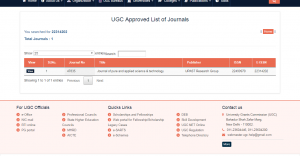River/Canal Bank Water in Terms of Transmitting the Hazardous Microorganism in Human Population
A.S. Shishodia1,*, Mukta Sharma2, Ajit Joshi3 and Dilshad Ali4 1,*,3Department of Microbiology, Mewar University, Chittorgarh, Rajasthan, India. 2Department of Microbiology, S.B.B. Dental College and Research Centre, Ghaziabad, U.P., India. 4Department of Microbiology, C.C.S. University, Meerut, U.P., India.The aim of present study is to determine the load of pathogenic microorganism and possible disease potentials of the water sources to prevent possible disease outbreak for the inhabitants. A total number of 50 water samples were collected from different river/canal bank sources and were subjected to standard microbiological analysis. The result of total heterotrophic bacterial count (cfu/ml) ranged between 21×105 to 16.6×106. Different bacterial isolates were microscopically and biochemically characterized as: Escherichia coli, Staphylococcus spp., Klebsiella spp., Streptococcus spp., and Proteus spp. In 50 water samples, 40(80.0%) samples were positive for Escherichia coli, 35(70.0%) for Staphylococcus spp., 25(50.0%) for Klebsiella spp., 25(50.0%) for Streptococcus spp., and 15(30.0%) for Proteus spp., respectively. This showed that Escherichia coli and Staphylococcus spp. occurred highest (80% and 70%) in water samples followed by Klebsiella and Streptococcus spp. (50.0%) while the lowest occurrence was recorded by Proteus spp. (30.0%), respectively. The results show that river/canal bank water sources are not free from enteric pathogens and expose users to diseases like dysentery, diarrhoea, skin, soft tissue, respiratory, urinary or respiratory tract infections, endovascular to wound infections etc.
Keywords: Pathogenic microorganism, Escherichia coli, Staphylococcus spp., Klebsiella spp., Streptococcus spp. and Proteus spp..





